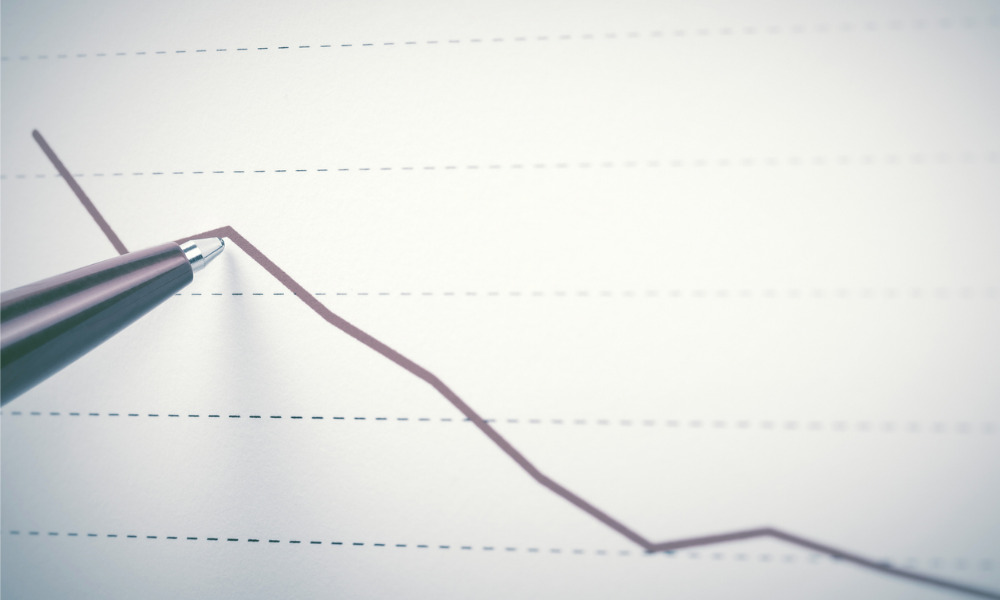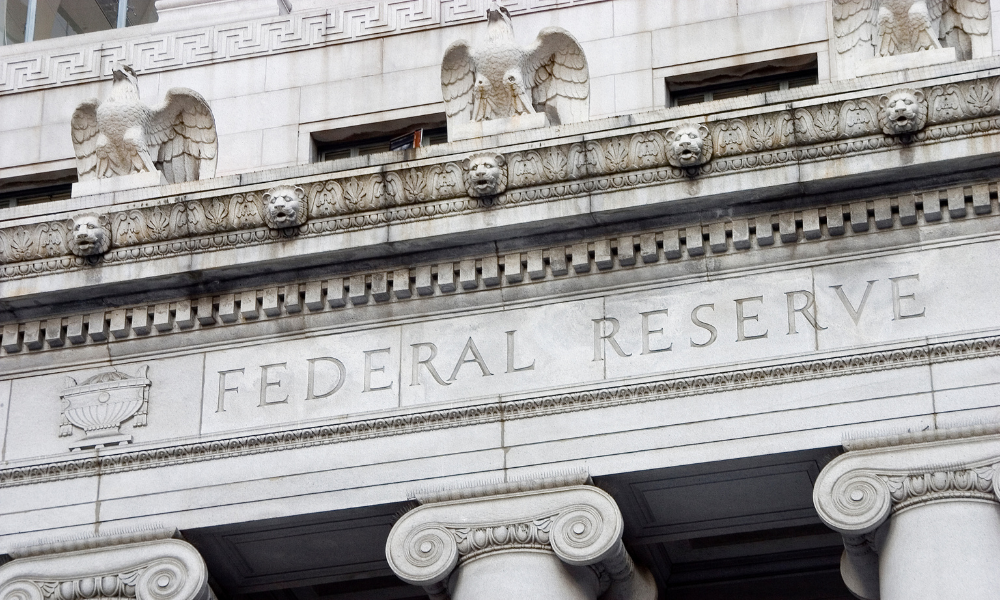Despite fiscal stimulus and strong market performance this week, top analysts tell WP there's further to fall

After some brutal weeks on the markets, the past few days resemble a recovery. Unprecedented government stimulus in Canada and the U.S. seems to have bucked up investor confidence. The crazy volatile swings that typified the last few weeks have abated and the TSX has approached bull market territory, gaining around 2,000 points between Monday’s close and Thursday’s open. Does this mean we’ve hit bottom in the markets?
Two leading analysts say there’s still further to fall.
Sadiq Adatia, CIO at Sun Life Global Investments, and Nela Richardson Principal and investment strategist at Edward Jones, both think we’ve not hit bottom yet. They agree, though, that while markets might dip further as news of the coronavirus pandemic worsens in North America, the period of extreme volatility is likely over. They’re looking at a few key indicators to gauge how deep the economic and market impacts will be. First and foremost, they’re examining the rate that the virus is spreading. They agree, as well, that this crash is not driven by a toxic economic system, as it was in 2008, but by a public health crisis. They think economic fundamentals remain in place for a recovery and policymakers have largely made the right moves.
“What I think the market needs to feel calm about is the fiscal stimulus from around the world (we saw the U.S. and its two trillion package, but we need to see others do the same), containment of the virus in the U.S. and Europe and how will China bounce back and how long will it take,” Adatia wrote in an email to WP. “This latter point is very important because China was the first country hit by the virus and looks to be the first coming out of it. If its economy can bounce back after a few months, then that will get markets some evidence of light at the end of the tunnel. It will show that once containment occurs, the recovery will not take too long.”
Nevertheless, he thinks there are still too many uncertainties to say we’ve already hit the bottom of the market. We don’t know how long city shutdowns might last in North America or whether government restrictions on movement and economic activity might deepen. We don’t yet know how much this virus has spread. As governments ramp up testing, we’re likely to see spikes in cases which may spook markets again. We’re also likely to see even worse unemployment numbers than those reported yesterday in the U.S. and Canada with millions in both countries applying for employment insurance.
“Those numbers aren't going away anytime soon. In fact, they might actually deepen and lead to a double-digit unemployment rate,” Nela Richardson explained. “There's significantly more pain that will be quantified. Some of that is already priced in the market, though, so I don’t think we're will see a big plunge in the market based on new data, but I still think there's lower to go.”
Richardson and Adatia agreed, though, that the time of 10 per cent swings and circuit breakers being triggered four times in one day is likely behind us. Nevertheless, volatility of a lesser kind is likely to remain a reality as news of the virus’ spread and its deeper economic impacts worsens.
Adatia thinks the current upswing is driven by ongoing rebalancing combined with huge stimulus efforts from policymakers. His team at Sun Life Global Investments thinks the fiscal aid packages have helped stabilize markets in the short term.
Richardson agrees, saying that despite her caution advisors should be cheered by stimulus efforts. The injection of 10 per cent of US GDP into the American economy, and 4 per cent of Canadian GDP into Canada’s economy, has buoyed markets in the past few days. She thinks, as well, that the bank of Canada’s one-point rate cut, followed up by bond purchases and the opening of credit facilities and low-cost loans, has been prudent.
“That one-two punch of monetary and fiscal stimulus helps stabilize the economy in the short term, and helps boost the recovery in the long term,” Richardson said. “It's exactly what markets needed to reduce some of the more extreme market swings.”
Like Adatia, Richardson is looking squarely at rates of viral spread to ascertain how deep and long the economic impact of this virus will be. She stressed that the market crashes and unemployment numbers are a result of a public health crisis, not a fundamentally unsound economy as in 2008. Once it looks like we’re going to get through the crisis, she thinks the economy will recover well.
At the same time, though, she says we’ve never seen such a “sudden stop” to economic activity before. Despite her optimism about the eventual recovery, in such unprecedented territory it’s hard to accurately predict how long it will take for things to get moving again.
“To say that this will be a ‘V-shaped recovery’ is very optimistic,” Richardson said. “It's likely to be a long ‘U’…This is where you have to take a close look at those stimulus packages because there's incentives embedded in every government stimulus package. And those incentives can slow or boost the recovery. And that's why the text matters a lot. It may be one and done today in the markets, but as we get more details on exactly what those packages mean, I think you'll see a little bit more volatility.”



